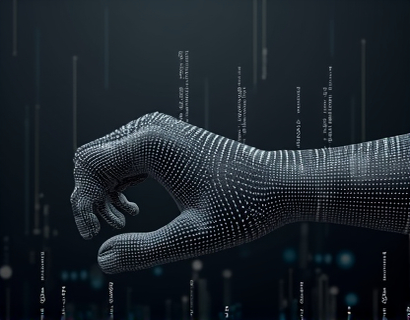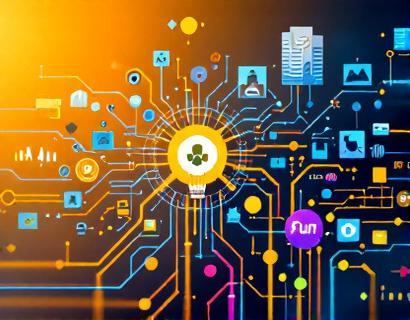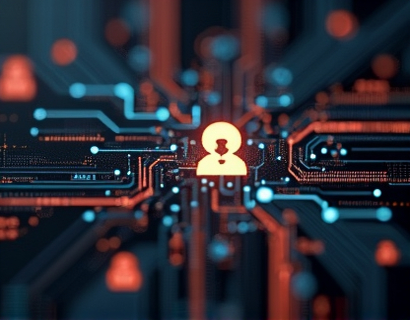Transforming Education with AI-Driven Chatbots: A Comprehensive Guide
In the rapidly evolving landscape of education, the integration of artificial intelligence (AI) has opened new avenues for enhancing learning experiences. Among these innovations, AI-driven educational chatbots stand out as a powerful tool, offering specialized insights to students, families, and educators. This article delves into the capabilities and benefits of these chatbots, focusing on how they provide industry-specific knowledge and services while ensuring a safe and educational environment for all users.
The Role of AI Chatbots in Education
AI chatbots are designed to simulate human-like conversations through artificial intelligence, enabling them to interact with users in a natural and intuitive manner. In the context of education, these chatbots serve as virtual assistants that can provide immediate and accurate information, answer questions, and guide users through various learning paths. For students, they offer a convenient and accessible way to gain knowledge on demand, while for educators, they provide valuable tools to enhance classroom instruction and support student learning outside the traditional classroom setting.
Specialized Insights for Students
One of the primary benefits of AI-driven educational chatbots is their ability to deliver specialized insights tailored to the needs of students. These chatbots can provide detailed explanations of complex concepts, offer step-by-step solutions to problems, and even simulate real-world scenarios to enhance understanding. For instance, in subjects like mathematics and science, chatbots can walk students through problem-solving processes, helping them grasp difficult ideas and build confidence in their abilities.
Moreover, these chatbots can adapt to the individual learning pace and style of each student. By analyzing user interactions, the chatbot can identify areas where a student may be struggling and provide additional resources or exercises to reinforce learning. This personalized approach ensures that each student receives the support they need to succeed, making education more inclusive and effective.
Industry Knowledge for Future Professionals
For students looking to explore specific industries, AI chatbots can serve as a valuable resource for gaining industry-specific knowledge. These chatbots can provide insights into current trends, emerging technologies, and key players within various sectors. By engaging with the chatbot, students can gain a deeper understanding of potential career paths and the skills required to succeed in their chosen fields.
For example, a chatbot focused on the tech industry can discuss the latest advancements in artificial intelligence, machine learning, and cybersecurity. It can also offer tips on how to develop relevant skills, such as programming languages, data analysis, and software development. This kind of specialized information helps students make informed decisions about their education and career goals, preparing them for the challenges of the modern workforce.
Ensuring Content Verification and Accuracy
A critical aspect of using AI chatbots in education is the assurance of content verification and accuracy. Misinformation can be detrimental to the learning process, leading to misunderstandings and misconceptions. To address this, the chatbots employed in educational settings are designed with robust verification mechanisms.
These mechanisms involve cross-referencing information from multiple reliable sources, including academic journals, official publications, and expert opinions. The chatbot's algorithms are programmed to flag and reject any content that lacks credible backing. Additionally, human moderators regularly review and update the chatbot's knowledge base to ensure it remains current and accurate. This multi-layered approach to content verification helps maintain the integrity of the information provided to users.
Child-Friendly Versions for Young Learners
Recognizing the importance of safety in educational technology, many AI chatbot platforms offer child-friendly versions specifically designed for young learners. These versions are tailored to be age-appropriate, with simpler language and engaging, interactive content that captures the attention of children.
For younger users, the chatbot can provide educational games, quizzes, and storytelling sessions that make learning fun and enjoyable. The interface is designed to be intuitive and user-friendly, ensuring that children can navigate the platform with ease. Moreover, parental controls can be implemented to monitor and manage the child's interactions, providing peace of mind for families.
Content verification is equally crucial in child-friendly versions. The chatbot ensures that all information is not only accurate but also suitable for young audiences. Sensitive topics are handled with care, and any potential risks are mitigated through strict content filters and regular audits.
Benefits for Families and Educators
AI-driven educational chatbots offer numerous benefits for families and educators as well. For parents, these chatbots serve as a valuable resource for supporting their children's education at home. They can use the chatbot to understand their child's progress, get recommendations for educational activities, and access additional learning materials.
Educators can leverage chatbots to enhance their teaching methods and provide personalized support to students. Chatbots can assist in lesson planning, offer real-time feedback on student performance, and suggest strategies to address common learning challenges. This can help teachers save time and focus more on interactive and engaging classroom activities.
Furthermore, chatbots can facilitate communication between educators and parents, keeping everyone informed about student progress and any areas that require attention. This collaborative approach fosters a supportive learning environment both in and out of the classroom.
Creating a Safe and Educational Environment
Safety is a paramount concern when it comes to educational technology, especially for children. AI chatbots are designed with multiple safety features to ensure a secure and educational experience for all users. These features include:
- Strict content filters to prevent the generation of inappropriate or harmful content
- Privacy controls to protect user data and ensure compliance with data protection regulations
- Parental controls that allow parents to monitor and manage their child's interactions with the chatbot
- Regular security audits to identify and address any potential vulnerabilities
By implementing these safety measures, AI chatbots can be confidently integrated into educational settings without compromising the well-being of users.
Conclusion
AI-driven educational chatbots represent a significant advancement in the way we approach learning and teaching. By providing specialized insights, ensuring content verification, and offering child-friendly versions, these chatbots create a safe and enriching educational experience for students, families, and educators. As technology continues to evolve, the potential for AI to transform education is vast, promising a future where learning is more accessible, personalized, and effective.











































